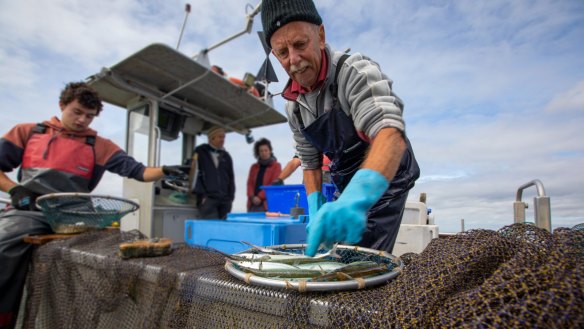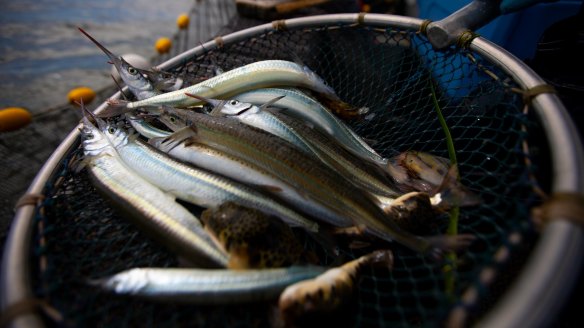New fishing rules for Corner Inlet rebalance the scales in favour of sustainability

Gippsland's Corner Inlet fishery has been thrown a lifeline. On Friday at Port Welshpool, the Victorian Minister for Fishing and Boating, Jaala Pulford, announced that a 28-year-old voluntary code of practice aimed at sustaining the fishery had been enshrined in law.
The shallow Gippsland bay, 160 kilometres south-east of Melbourne, is Victoria's last remaining bay and inlet commercial fishery. It produces high-quality fish prized by top chefs including Ben Shewry and Neil Perry.
In 1992, the licensed fishers made a handshake agreement to use their nets no more than twice a day, a limit designed to ensure ongoing fish supplies.

Until recently the voluntary code worked well, with average annual catches around 325 tonnes a year for the past 20 years. However, when new licence-holders bought into the fishery, things changed. The 2018-2019 catch was 446 tonnes, split unevenly between the 18 licensees.
Third-generation Corner Inlet fisherman Neville Clarke believes newer players are using their nets too often. "Such a large spike is a concern," he says. "It shows how dramatic the effect can be if just one or two operators fish harder than the rest. If we all did that, there would be no sustainability in Corner Inlet."
Mr Clarke was instrumental in a campaign to formalise the voluntary limit in a Victorian Fisheries Authority Notice. As well as the daily two-net limit, fishers are allowed to use only one type of fishing gear at a time, further restricting catch, and their boats will be fitted with monitoring devices to ensure compliance.
Since commercial net fishing began to be phased out in the Gippsland Lakes and Port Phillip Bay after the 2014 state election, largely through the agitation of the recreational fishing lobby, Corner Inlet has become Victoria's only bay and inlet commercial fishery.
Until Ms Pulford's ruling, Mr Clarke was concerned that Corner Inlet would also be shut down. "But I believe this announcement has cemented our fishery because it can be seen by the general public that it's being responsibly managed," he says.
Sascha Rust is program manager at sustainable seafood group GoodFish. "This is a great example of fishers taking leadership over their own fishery to ensure strong economic and environmental outcomes," he says. "Corner Inlet presents an incredibly valuable source of fish for Melbourne chefs and the broader community in Victoria."
Not everyone is happy with the changes. Seafood Industry Victoria (SIV) represents commercial fishers, wholesalers, processors and retailers. "We support the codification of the voluntary code of practice," says SIV independent chair Joanne Butterworth-Gray. "But SIV does not support only one set of gear in the water at a time. Two sets of gear is fishing for two types of fish – it's not about plundering."
Wayne Cripps is a fourth-generation fisher out of Port Welshpool. He's happy with the two-shot limit but not the single equipment rule. He has used a mesh net (which sits on the sea floor grasses) to catch rock flathead and a seine net (which loops behind a boat and floats above the sea floor) to catch whiting and garfish. His fresh catch is delivered to the fish shop his wife, Linda, runs in Port Welshpool.
"We work the two equipment types so we have a good supply of fish for the shop by 9am," he says. "The new regulation will not allow us to do that. It will affect our business financially and the public is going to miss out on that fish."
